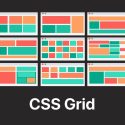Post at a Glance
As a software designer you’ll have to agree that collaboration is the critical heartbeat of innovation. Teams of designers, developers, product managers, and stakeholders must work in harmony to transform ideas into functional, user-friendly software. Enter Figma, a cloud-based design and prototyping tool that has revolutionized how teams collaborate to create software. With its intuitive interface, real-time collaboration features, and robust integrations, Figma has become a cornerstone for modern software development workflows.
This blog post explores how Figma empowers teams to design, iterate, and deliver software efficiently, fostering creativity and alignment across disciplines. Let’s dive into why Figma is a lovely tool for collaborative software creation.
The Power of Figma Collaboration for Software Development
Figma’s rise to prominence stems from its ability to bridge the gap between design and development. Unlike traditional design tools that often required exporting files or using clunky sharing methods, Figma operates entirely in the cloud, enabling seamless collaboration.
Designers can create wireframes, mockups, and prototypes, while developers can access design specifications and assets in real time. Product managers and stakeholders can provide feedback directly within the platform, reducing miscommunication and streamlining workflows.One of Figma’s standout features is its real-time collaboration capability. Multiple team members can work on the same file simultaneously, much like Google Docs for design. This eliminates version control nightmares and ensures everyone is on the same page—literally and figuratively.
For example, a designer in New York can tweak a user interface while a developer in Tokyo inspects the CSS properties, all within the same Figma file. This level of synchronicity is invaluable for distributed teams, which are increasingly common in today’s globalized workforce.
Setting Up a Collaborative Workflow in Figma
To harness Figma’s full potential for software development, teams need a structured workflow. Here’s a step-by-step guide to using Figma effectively within a team:
- Centralized Project Setup: Start by creating a Figma project for your software. Organize files logically—use separate files or pages for wireframes, high-fidelity designs, and prototypes. Naming conventions (e.g., “Homepage_Wireframe_v1”) keep things tidy. Figma’s team and organization plans allow for project hierarchies, making it easy to manage large-scale software projects.
- Define Roles and Permissions: Figma’s permission settings ensure team members have appropriate access. Designers might have full editing rights, while developers and stakeholders can be granted view or comment-only access. This prevents accidental changes while encouraging input from all parties.
- Design Systems for Consistency: A design system in Figma—comprising components, styles, and libraries—ensures consistency across the software’s user interface. For instance, creating reusable buttons, typography styles, and color palettes saves time and maintains a cohesive look. Teams can share these libraries across projects, allowing developers to reference the same styles during implementation.
- Prototyping for User Testing: Figma’s prototyping tools let teams create interactive mockups to simulate user flows. Designers can link screens, add transitions, and test navigation before a single line of code is written. Sharing these prototypes with stakeholders or conducting user testing sessions helps validate ideas early, reducing costly revisions later.
- Handoff to Developers: Figma’s developer handoff features are a game-changer. Developers can inspect designs to extract CSS, SVG, or other code snippets directly from the canvas. Measurements, fonts, and colors are readily available, minimizing back-and-forth. Plugins like Figma to Code can even generate React or HTML code, further bridging the design-to-development gap.
- Feedback and Iteration: Figma’s commenting system allows team members to leave targeted feedback on specific design elements. This keeps discussions contextual and actionable. Version history tracks changes, so teams can revert to earlier iterations if needed, ensuring nothing gets lost in the creative process.
Best Practices for Team Collaboration in Figma
To maximize Figma’s impact, teams should adopt best practices tailored to collaborative software development:
- Communicate Early and Often: Use Figma’s comments and integrated tools like Slack or Jira to keep communication fluid. For example, tagging a developer in a comment about a button’s hover state ensures clarity before coding begins.
- Leverage Plugins: Figma’s plugin ecosystem enhances functionality. Tools like Zeplin for handoff, Content Reel for placeholder text, or Stark for website accessibility checks streamline workflows. Teams can even create custom plugins for specific needs, such as automating design-to-code pipelines.
- Regular Syncs and Reviews: Schedule design reviews within Figma to gather feedback from all stakeholders. Use presentation mode to walk through prototypes, ensuring everyone understands the user experience before development starts.
- Document Everything: Figma’s pages and frames can double as documentation hubs. Create a “Style Guide” page or a “Changelog” frame to track updates. This transparency helps onboard new team members and keeps everyone aligned.
- Embrace Iteration: Software development is iterative, and Figma supports this beautifully. Use version history to experiment without fear, and create branches for exploratory designs. This encourages creativity while maintaining stability.
Real-World Applications: How Teams Use Figma
To illustrate Figma’s impact, consider a hypothetical software development team building a mobile banking app. The product manager kicks off the project by creating a Figma file with user stories and rough wireframes. Designers refine these into high-fidelity screens, using a shared design system to ensure consistency. Developers access the file to extract assets and CSS, while stakeholders provide feedback via comments.
The team creates a prototype to test the app’s onboarding flow with real users, identifying pain points early. By the time coding begins, everyone is aligned, and the handoff is seamless. This streamlined process saves time, reduces errors, and delivers a polished product. Real-world companies like Airbnb, Microsoft, and GitHub have embraced Figma for similar reasons.
Airbnb’s design team uses Figma to collaborate across global offices, ensuring their platform’s UI remains consistent. Microsoft leverages Figma’s prototyping to test new features for Teams, while GitHub uses it to align designers and developers on open-source projects. These examples highlight Figma’s versatility across industries and team sizes.
Overcoming Common Challenges
While Figma is powerful, teams may encounter challenges when integrating it into their workflow. Here are some common hurdles and how to address them:
- Learning Curve: New users may find Figma’s interface overwhelming. Invest in onboarding sessions or leverage Figma’s extensive tutorials and community resources to get up to speed.
- File Management: Large projects can become unwieldy. Use Figma’s organization features, like projects and teams, to keep files structured. Archive outdated files to reduce clutter.
- Stakeholder Overload: Too many comments from stakeholders can slow progress. Set clear feedback deadlines and use Figma’s “resolve” feature to manage comment threads efficiently.
- Integration Gaps: While Figma integrates with tools like Slack, Jira, and GitHub, some teams may need custom solutions. Explore Figma’s API or third-party plugins to bridge gaps.
Figma’s Role in Agile and Remote Work
Figma aligns perfectly with agile methodologies, where rapid iteration and collaboration are key. In sprint planning, teams can use Figma to visualize features, prioritize tasks, and create prototypes for upcoming sprints. During daily standups, designers can share Figma links to discuss progress, ensuring alignment with developers.
For remote teams, Figma’s cloud-based nature eliminates the need for VPNs or file transfers, making it ideal for distributed workforces.Moreover, Figma fosters inclusivity by allowing non-designers to participate in the design process. Product managers can sketch rough ideas, and developers can provide input on feasibility, democratizing creativity. This inclusivity strengthens team cohesion and ensures the final software reflects diverse perspectives.
The Future of Figma in Software Development
As software development evolves, Figma continues to innovate. Features like FigJam, Figma’s collaborative whiteboard, enable teams to brainstorm ideas before diving into design. The introduction of variables and advanced prototyping tools in recent updates enhances Figma’s ability to handle complex interactions, making it a stronger contender for end-to-end software creation.
Additionally, Figma’s acquisition by Adobe in 2022 has sparked discussions about deeper integrations with tools like Adobe XD and Creative Cloud, potentially expanding its capabilities further. Looking ahead, Figma’s role in AI-driven design and development is promising. Plugins leveraging AI, such as those for generating layouts or optimizing accessibility, are already emerging. As AI becomes more integrated into software development, Figma is well-positioned to serve as a hub for human-AI collaboration, blending creativity with automation.
Why Figma Collaboration Works for Teams

Figma’s ability to unite designers, developers, and stakeholders in a single platform is nothing short of transformative. Its real-time collaboration, robust design tools, and developer-friendly features make it an indispensable asset for software development. By fostering transparency, streamlining handoffs, and encouraging iteration, Figma empowers teams to create software that delights users.
Whether you’re building a startup’s MVP or a multinational’s enterprise software, Figma’s flexibility and accessibility make it a lovely choice for collaborative creation.In conclusion, Figma is more than a design tool—it’s a catalyst for teamwork and innovation. By adopting Figma, teams can break down silos, align on goals, and deliver software that meets user needs. So, gather your team, fire up Figma, and start crafting your next software masterpiece together.

Request Web Design or SEO Services
Looking for web design or SEO services? Fill out this short form and we’ll contact you to talk about your project needs. Help us understand your vision so we can deliver a tailored, user-friendly design that effectively represents your brand















